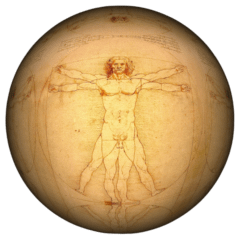This video is a timeline of mass extinctions that life on Earth had. There is a total of 5 mass extinctions. This reminds me of the legend of an Indian deity, Shiva who destroys the Universe and after that rebuilds a new and better version of the Universe. All five mass extinctions reduced the living organisms on Earth but pushed the evolution of life in a better direction.
After oceans formed on Earth life appeared on the planet. How life began is a mystery. The fossils show that life had ups and downs and there are five major mass extinctions in the history of life on Earth.
Life began in water
Life began in water, possibly near volcanic springs. Once the molecules started to multiply the evolution of life began. First cells emerged around 3,7 billion years ago. Many grew in mounds on the sea floor and started to create photosynthesis, thus generating oxygen which changed Earth’s atmosphere.
The snowball Earth
Between 780-620 million years ago Earth was cowered with ice, and life on the surface was extinct but microorganisms survived under the ice. This is the snowball Earth period. When the snowball Earth period ended, around 600 million years ago first animals (Multicellular organisms) emerged. Around 540 million years ago life exploded in the oceans.
Cambrian
Around 540 million years ago there was an explosion of life called the Cambrian explosion with trilobites, stromatolites and many more.
Around 525 million years ago first vertebrates emerged, they were fish like animals who had simple mouths without teeth which had evolved into hinged jaws to grab prey.
Around 440 million years ago most marine species disappeared through a major extinction. The cause is unknown but most likely was a climate change.
420-360 million years ago was the age of the fish who ruled the seas. The Dunkleosteous is a predator with armored body and huge jaws.
First amphibians
Around 360 million years ago oceans decreased, and first amphibians emerged, and they stepped onto the new emerged land in search for prey. Plants have now colonized the land.
Devonian
Around 360 million years ago there was another mass extinction at the end of Devonian period. Most species living in the sea vanished. Of the sea by volcanic eruptions was a potential reason.
The age of rainforests
Around 350-290 million years ago was the age of rainforests, with giant millipedes and giant dragonflies. Fossils of these forests will eventually become coal.
Reptiles
Around 300-250 million years ago reptiles and synapsids became the dominant vertebrates on land.
The Great Dying
Around 250 million years ago we had the greatest mass extinction in history. 95% of the planet species disappeared. It is called the Great Dying. It took 30 million years for life on land to recover. From 230-65 million years ago was the age of the Dinosaurs. Birds evolved form dinosaurs and mammals evolved from synapsids. Around 65 million years ago an asteroid hit Earth and created the fifth mass extinction, as a result of which most dinosaurs disappeared.
The rise of mammals
From 65 to 3 million years ago was the rise of mammals. Mammals took place of dinosaurs. Some mammals adapted to life in the sea and are larger than dinosaurs. They face extinction through hunting by humans.
Pleistocene
2,6 million years ago to 10000 BC we had the ice age period called Pleistocene. Ice covers most of the north continents.
Sixth mass extinction?
Hopefully the sixth mass extinction would not be generated by humans.
Thank you for watching. Please subscribe to my channel.

